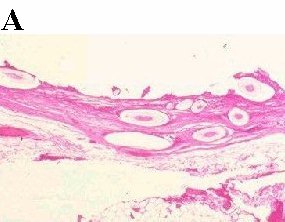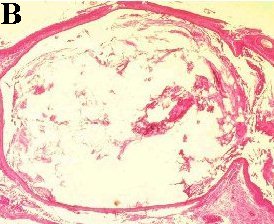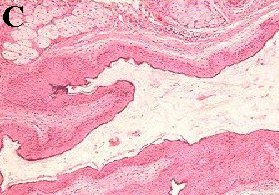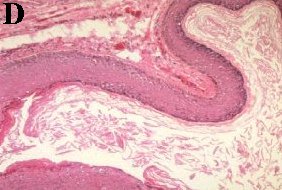| Epidermoid
and dermoid cysts
|
|||||||||||
dermis for example after skin surgery, trauma or congenital. The content of the cyst is mainly keratin as only the cysts do not contain dermal structures such as hair follicle or sebaceous glands. Features common to both are: the dermis.
a
|
|||||||||||



